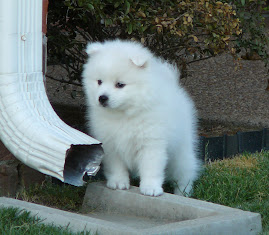 June 20, 2010
June 20, 2010Did you know that the fourth Friday of every June is "Take Your Dog to Work Day"? In 1988, Pet Sitters International began designating this day to help increase awareness for homeless pets. The rationale is that when businesses open their doors to employees' pets, non-pet owning co-workers will be inspired to adopt a best friend of their very own after witnessing the joys of the human-canine bond firsthand (according to Petcentric.com).
Not-so-surprisingly, employees are not the only ones to benefit from having pets at work. The employers benefit, as well. Studies have shown that allowing pets in the work place decreases absenteeism and smoking, while simultaneously increasing productivity, creativity, and amicable relationships between employees, their co-workers, and their supervisors.
If you plan to participate in this event, TakeYourDog.com provides 7 tips to ensure a safe and fun day:
1) DO AN OFFICE CHECK. Check with management and co-workers to see if anyone is allergic, afraid, or opposed to you bringing your dog to work for this one special day.
2) PUPPY-PROOF YOUR WORK SPACE. Remove poisonous plants, hide electrical cords and wires and secure toxic items such as correction fluid, permanent markers, etc. Any office items in question should be placed out of your dog's reach.
3) BATHE AND GROOM YOUR DOG BEFORE HIS OFFICE DEBUT. Be sure his shots are up-to-date. If your dog appears sick, don't bring him to the office. Dogs who are aggressive or overly shy should not accompany you to work. Instead, consider bringing a favorite picture of your pooch.
4) PREPARE A DOGGIE BAG. Include food, treats, bowls, toys, leash, paper towels, clean-up bags and pet-safe disinfectant (just in case). If you are routinely in and out of your work space, consider bringing a portable kennel for your dog's comfort and your peace of mind.
5) PLAN YOUR PET'S FEEDING TIMES CAREFULLY. Be sure to choose an appropriate area for your dog to relieve himself afterward.
6) AVOID FORCING CO-WORKERS TO INTERACT WITH YOUR DOG. Dog lovers will make themselves known. To avoid pet accidents, monitor the amount of treats your pet is being given. Remember that chocolate, candy, and other people food should not be shared with dogs.
7) HAVE AN EXIT STRATEGY. Although most dogs enjoy Take Your Dog To Work Day, your pet may not. Should your dog become overly boisterous, agitated, or withdrawn, consider taking him home. Most companies allow for this on this special day. Never, under any circumstances, leave your pet alone in a vehicle while you work. Consider enlisting the help of a professional pet sitter from www.petsit.com/locate.
For more information on how to make Take Your Dog to Work Day as successful as possible, visit www.TakeYourDog.com.













